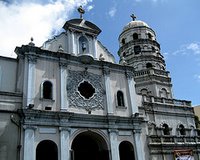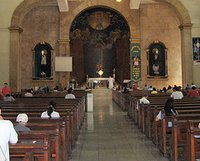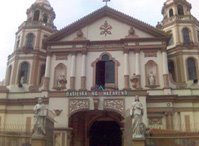Today, the Universal Society of Jesus celebrates the Memorial of St. Alphonsus Rodriguez, S.J., a lay brother. Alphonsus Rodriguez (Alfonso Rodriguez, 1533-1617) gained enduring fame for the extraordinary holiness that shone out of the very ordinariness of his work as the Jesuit doorkeeper of a school. He was born in Segovia, Spain, the second son of a successful wool and cloth merchant whose comfortable household provided hospitality to Father Peter Faber, one of St. Ignatius' first companions, when that Jesuit came to Segovia to preach. Faber helped the young boy prepare for his first companion, but Rodriguez's path to the Society of Jesus was slow and indirect.
On Jan. 31, 1571, at 37 years of age, Rodriguez entered the Jesuit novitiate but was sent only six months later to the college of Montesión in Palma on the island of Majorca, off the Spanish coast. There the new brother would finish his novitiate and become famous for his humble job of door-keeper and his friendship with another Jesuit saint, Peter Claver, apostle to the slaves recently arrived in Colombia.
The Jesuit doorkeeper was always appreciated for his kindness and holiness but only after his death did his memoirs and spiritual notes reveal the quality and depth of his prayer life. The humble brother had been favored by God with remarkable mystical graces, ecstasies and visions of our Lord, our Lady and the saints.
To celebrate the gift of St. Aphonsus to the Church and to the Society of Jesus, below is a poem in honor of St. Aphonsus by the famous Jesuit poet Gerard Manley Hopkins.
HONOUR is flashed off exploit, so we say;
And those strokes once that gashed flesh or galled shield
Should tongue that time now, trumpet now that field,
And, on the fighter, forge his glorious day.
On Christ they do and on the martyr may;
But be the war within, the brand we wield
Unseen, the heroic breast not outward-steeled,
Earth hears no hurtle then from fiercest fray.
Yet God (that hews mountain and continent,
Earth, all, out; who, with trickling increment,
Veins violets and tall trees makes more and more)
Could crowd career with conquest while there went
Those years and years by of world without event
That in Majorca Alfonso watched the door.
Fr. Gerard Manley Hopkins, S.J. (1844-1889) spent his brief life teaching classics in Ireland, but he is best known for his intense poetry.








